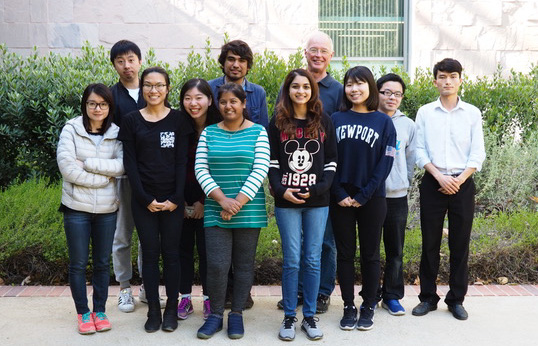Zink group research

Our spectroscopic research focuses on understanding the properties of metal-containing molecules in excited electronic states. One important area of investigation is the determination of excited state geometries. Upon excitation, transition metal compounds generally undergo large distortions along many normal modes of vibration. Resonance Raman spectra, in conjunction with electronic emission and absorption spectra, Resonance Enhanced Multi Photon Ionization (REMPI) and the time-dependent theory of spectroscopy, are used to calculate the geometries. Multiple coupled excited states and modes create interesting spectroscopic effects and interpretive challenges; wavepacket amplitude transfer between excited states is calculated. The metal compounds are studied in both condensed media, such as single crystals and glasses, and in ultra cold molecular beams.
Laser photochemistry of volatile metal-containing molecules is being used to deposit films and patterned structures of metals and semiconductors on substrates. An important goal of the research is to understand the mechanisms by which the precursor molecule fragments and forms the desired solid. By utilizing luminescence and mass spectroscopic techniques to study the photolytic properties, we discover fragmentation pathways and identify desired materials. We obtain action spectra and identify the excited state origins of these species by monitoring the wavelength dependencies of specific photoproducts. Through these studies activation of specific reaction channels to control the photolytic processes are realized. We also design new single-source precursors for metal and semiconductor deposition.
The sol-gel process is used to make porous inorganic glasses in the form of monoliths, thin films and fibers. These glasses act as matrices for trapping active species such as enzymes, antibodies, and organic compounds. Analytes can diffuse through pores to the active molecule resulting in an optical change. These optical sensors are used to detect physical properties such as polarity, biomedical analytes such as glucose, and biological or chemical warfare agents. The sol-gel glasses are also templated with surfactants and living cells to produce materials with long-range order. The dynamics of formation are monitored in real time by using optical probes. Exotic materials including two-dimensional electron hopping and molecular machines are synthesized.
Welcome to the Zink Group Website
“An experiment is a question which science poses to Nature, and a measurement is the recording of Nature’s answer.”

Copyright (c) 2018
Zink Research Group